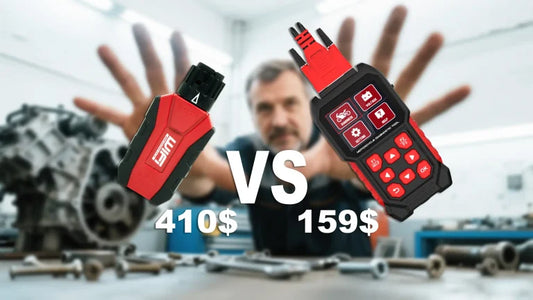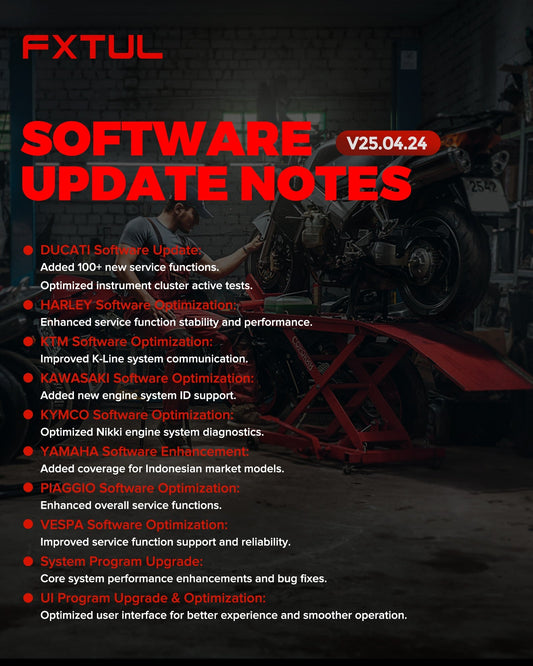Your motorcycle chain is the lifeline of your drivetrain, efficiently transferring the engine's powerful torque to the rear wheel. A chain that isn't properly maintained not only produces annoying noise but also leads to:
· Power loss: Worn and dry chains consume more power.
· Accelerated wear: Not only does it wear out faster itself, but it also severely damages expensive sprockets.
· Safety hazards: In the worst case, an excessively worn or damaged chain may snap, causing loss of control and serious accidents.
Regularly cleaning and lubricating your chain is the most important and cost-effective task in motorcycle maintenance. Investing just a little time and effort can significantly enhance your riding experience and save on future repair costs.
Preparation and Safety Precautions
Required Tools and Materials:
1. Rear Wheel Lift Stand/Lift Peg: Essential! It suspends the rear wheel off the ground, allowing free rotation and easy handling.
2. Chain cleaner: Use a specialized cleaner for strong cleaning power that's gentle on seals. Never use highly corrosive gasoline, diesel, degreasers, or WD-40, as they damage the internal O-rings (seals) and cause lubricant loss.
3. Chain Lubricant: Always use specialized chain oil (wax). Its viscosity and adhesion are specifically designed for chains, minimizing splatter.
4. Maintenance Tools: Chain brush (three-sided brush preferred), gloves, old towel or rag, old newspaper (to protect tires and rims).
5. Safety Goggles: Protect eyes from splashes of cleaning agents and oil.
Safety First Steps:
· Ensure the engine is completely cool! Working on a hot engine can cause severe burns.
· Put the motorcycle in neutral gear and secure it to prevent tipping.
· Use a kickstand to lift the rear wheel completely off the ground.
Six-Step Cleaning and Lubrication Method
To help you visualize the entire process, we've summarized it into these six core steps:
1: Initial Cleaning
· Place old newspapers beneath and beside the chain to protect the hub and tires from contamination.
· Shake the cleaner can and thoroughly spray it onto both the inner and outer sides of the chain, especially at the chain and link joints. Let it sit for a few minutes to dissolve stubborn grime.
2: Detailed Brushing
· Put on gloves and safety goggles.
· Using a chain brush, clamp one side of the chain (starting from the outer side, for example).
· Slowly rotate the rear wheel clockwise, guiding the brush along the entire surface of that chain side. Ensure every link is brushed.
· Repeat this process to clean the inner and top surfaces of the chain. A three-sided brush can accomplish this task simultaneously for greater efficiency.
3: Wiping and Air-Drying
· Wrap a clean old towel or rag around the chain. Slowly turn the rear wheel again to wipe away all dissolved grime and cleaning agent residue.
· Ensure the chain is completely dry before proceeding. Residual cleaner will dilute newly applied chain lube.
4: Precise Lubrication (Critical Step)
· Shake the chain lube container.
· Aim the nozzle at the connection points between rollers and bushings on the chain's inner side. The goal is to penetrate the lubricant into the chain's O-rings, not just coat the exterior.
· Begin spraying from the middle section of the chain's lower end while slowly rotating the rear wheel. This utilizes gravity to aid penetration and prevents excessive spray onto tires or brake rotors (extremely dangerous!).
· Avoid over-spraying; a single “dab” per link is sufficient. A uniform oil film should cover the entire circumference.
5: Wipe Off Excess Oil
· After lubricating, wrap the chain again with a clean towel and gently rotate the wheel one full turn.
· This step removes excess oil from the chain's exterior. Lubricant is needed inside the chain links; excess oil on the outside will attract dust and grit, forming new abrasive paste that accelerates wear.
6: Allow to Cure
· Allow sufficient time (at least 1-2 hours, ideally overnight) for the chain oil to adhere and penetrate the O-rings. Riding immediately will cause centrifugal force to fling uncured oil everywhere.
Maintenance Frequency and Professional Recommendations
· Every 500 km: Check chain tension and lubricate.
· Every 1000 km or after each long ride: Perform a complete cleaning and lubrication.
· After riding in rain or humid conditions: Lubricate promptly to prevent rust.
· Regular checks: Frequently inspect chain tension (refer to manual's standard values) and wear. If the chain is excessively stretched (unable to restore standard tension even after adjustment) or exhibits “stiff links” (stiff rotation), immediately replace the chain and chainring.
Conclusion: Cultivate good habits for smooth riding
Chain maintenance is a highly rewarding DIY task. Spend half an hour caring for this power transmission belt, and it will reward you with smoother, quieter, safer rides while saving you significant repair costs.
Go check your chain now and give it the care it deserves!




